Shooting into the Sun
Taking photos shooting into the sun can be difficult due to the large difference in brightness between the sun and the rest of the image. However, don't let this put you off as you can get some great photos when shooting into the sun.
Obviously, when shooting into the sun you must be very careful, especially if you are using a telephoto lens. Don't look straight into the sun when photographing it, and generally try and keep to shooting later and earlier in the day when the sun's brightness isn't quite so intense as it can be during the day time.
Starburst effect Sun
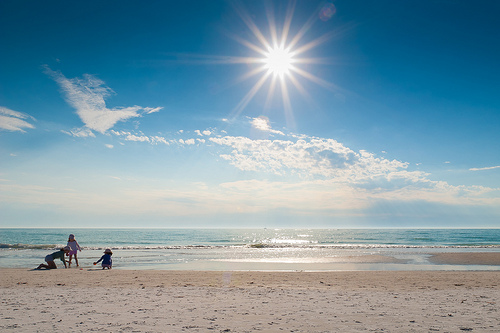
Sunday, January 16, 2011, 3:44PM by Robert S. Donovan on flickr (licensed CC-BY)
If you take a photo looking into the sun on a clear day, you can achieve a nice starburst effect from the sun. You will want to use a wide angle focal length and stop the aperture down to around f/8.
Because of the large difference in exposure between the sun and your subject, you may also need to use a split Neutral Density Filter. Alternatively, you can bracket your shot and combine the exposures in Photoshop or similar software. By doing this you can ensure that you capture the starburst effect of the sun while keeping your subject exposed properly.
Hazy Sunlight
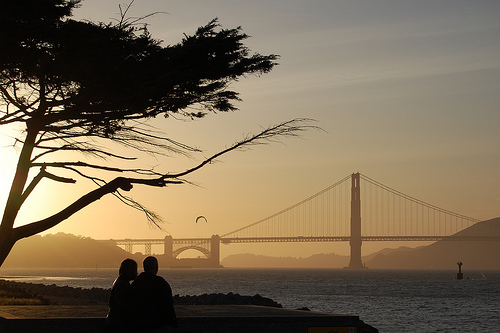
Romantic View by Josiah Mackenzie on flickr (licensed CC-BY)
On days where there is light hazy cloud cover, mist, or fog, you will find it hard to get a starburst effect from the sun. However, these conditions are very good for taking photos into the sun.
These sorts of conditions often occur around sunset and sunrise, when the sun gives off a beautiful warm glow. Depending on how much of the sky is lit up orange, you may want to go for a medium to long focal length. You can then ensure that all the sky captured in your photo is lit up the orange colour.
Sun behind clouds producing Sunbeams
When the sun is hiding behind clouds, you can sometimes capture sun beams bursting through small holes in the clouds, or over the edges of the cloud. This can make for a dramatic photograph.
Other obstructions in front of the sun can also produce sunbeams in a similar way. You can sometimes find sunbeams in forests, caused by the sun passing through the trees and the moisture-rich air.
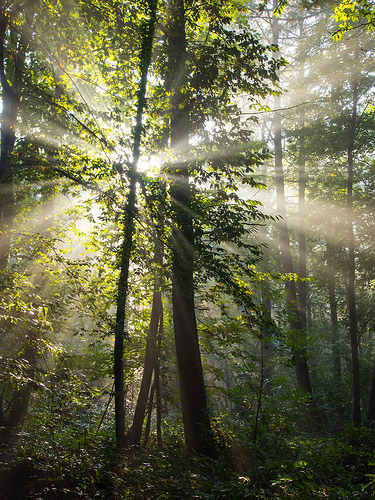
Morninglight by Johan Neven on flickr (licensed CC-BY)
Again, you are most likely to be able to see the sunbeams clearly early or late in the day. If there is some atmospheric distortion, such as dust or haze, this should make the sunbeams more visible.

Improve Your Landscape Photography
When taking the photograph, you may need to slightly underexpose to ensure the sunbeams are visible and not too bright.
Sunlight Reflections
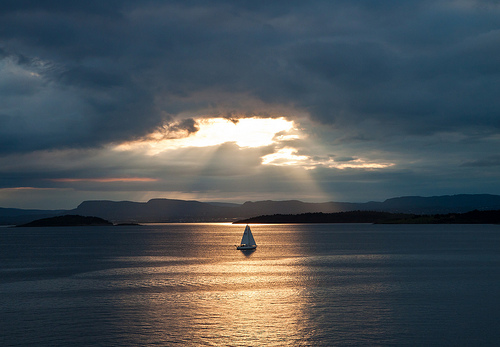
Sailing by Tom Bech on flickr (licensed CC-BY)
Interesting effects can be achieved when photographing the sun reflected in water. You can also capture reflections from the sun in any reflective material, such as ice, a wet road, or the glass and steel structure of a building.
When photographing the reflection of the sun, you can often exclude the sun from the photo altogether. Veiling flare, which reduces the contrast of the whole photo can often occur when shooting towards the sun. Using a lens hood or your hand to shade the lens from the sun will help reduce lens flare.
Silhouettes
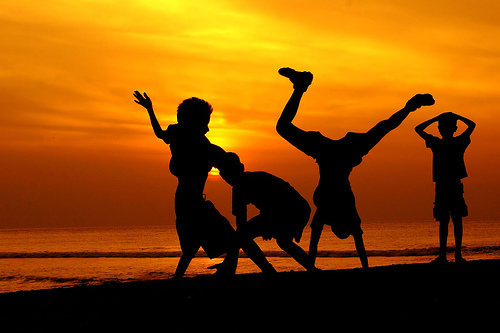
Creative independence by Nattu on flickr (licensed CC-BY)
By shooting into the sun and deliberately underexposing your subject you can create a great a silhouette photo. Silhouettes work best when the subject has a definite shape and form that can be easily identified by its outline.
Silhouettes require a strong backlight to create a good contrast between the silhouetted subject and the background. The sun makes a perfect backlight for creating silhouette photos.
If you are shooting during the daytime, likely the sun will be high in the sky, and so you will need to shoot upwards to include the sun as a backlight. Shooting at sunrise and sunset, the sun will be much lower in the sky, meaning you can shoot at a 'normal' angle to include the sun as the backlight.




